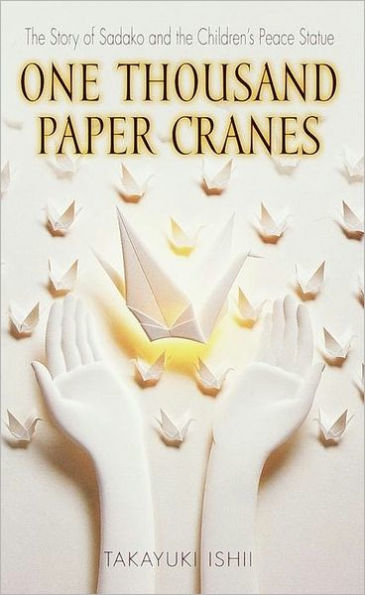The inspirational story of the Japanese national campaign to build the Children's Peace Statue honoring Sadako and hundreds of other children who died as a result of the bombing of Hiroshima.
Ten years after the atomic bomb was dropped on Hiroshima, Sadako Sasaki died as a result of atomic bomb disease. Sadako's determination to fold one thousand paper cranes and her courageous struggle with her illness inspired her classmates. After her death, they started a national campaign to build the Children's Peace Statue to remember Sadako and the many other children who were victims of the Hiroshima bombing. On top of the statue is a girl holding a large crane in her outstretched arms. Today in Hiroshima Peace Memorial Park, this statue of Sadako is beautifully decorated with thousands of paper cranes given by people throughout the world.
The inspirational story of the Japanese national campaign to build the Children's Peace Statue honoring Sadako and hundreds of other children who died as a result of the bombing of Hiroshima.
Ten years after the atomic bomb was dropped on Hiroshima, Sadako Sasaki died as a result of atomic bomb disease. Sadako's determination to fold one thousand paper cranes and her courageous struggle with her illness inspired her classmates. After her death, they started a national campaign to build the Children's Peace Statue to remember Sadako and the many other children who were victims of the Hiroshima bombing. On top of the statue is a girl holding a large crane in her outstretched arms. Today in Hiroshima Peace Memorial Park, this statue of Sadako is beautifully decorated with thousands of paper cranes given by people throughout the world.

One Thousand Paper Cranes: The Story of Sadako and the Children's Peace Statue
112
One Thousand Paper Cranes: The Story of Sadako and the Children's Peace Statue
112Paperback(Mass Market Paperback - Reprint)
Related collections and offers

Product Details
| ISBN-13: | 9780440228431 |
|---|---|
| Publisher: | Random House Children's Books |
| Publication date: | 01/28/2001 |
| Edition description: | Reprint |
| Pages: | 112 |
| Sales rank: | 122,560 |
| Product dimensions: | 4.25(w) x 6.88(h) x 0.31(d) |
| Lexile: | 1010L (what's this?) |
| Age Range: | 12 - 10 Years |
About the Author
Customer Reviews
Explore More Items
Mockingjay, the final book in the New York Times bestselling Hunger Games series, is now available with all-new cover art from the feature film!
Katniss Everdeen, girl on fire, has survived. But her
"Spotty Powder" - the missing chapter from Charlie and the Chocolate Factory - available for the first time!
In Charlie and the Chocolate Factory, Charlie Bucket loves chocolate. And Mr. Willy Wonka,
Professional tricksters put your cunning to the test. Inside this wicked little book you'll find
El consejo de un abogado a sus hijos mientras él defiende el verdadero
Plot synopsis of this classic is made meaningful with analysis and quotes by noted literary critics, summaries of the work's main themes and characters, a sketch of the author's life and times, a
#1 New York Times Bestseller
“Go Set a Watchman is such an important book, perhaps the most important novel on race to come out of the white South in decades." — New York Times
From the beloved author of A Wrinkle in Time comes the definitive edition of her inspirational and timeless poetry, featuring more than 200 original poems, a new Foreword by Sarah Arthur,
NEWBERY MEDAL WINNER - TIME MAGAZINE'S 100 BEST FANTASY BOOKS OF ALL TIME - NOW A MAJOR MOTION PICTURE FROM DISNEY
Read the ground-breaking science fiction and fantasy classic that has delightedThe
By the author of A Wrinkle in Time, the conclusion to the Polly O'Keefe stories finds Polly taking an unforgettable trip to Europe, all by herself.
"Exquisite." --Publishers Weekly
